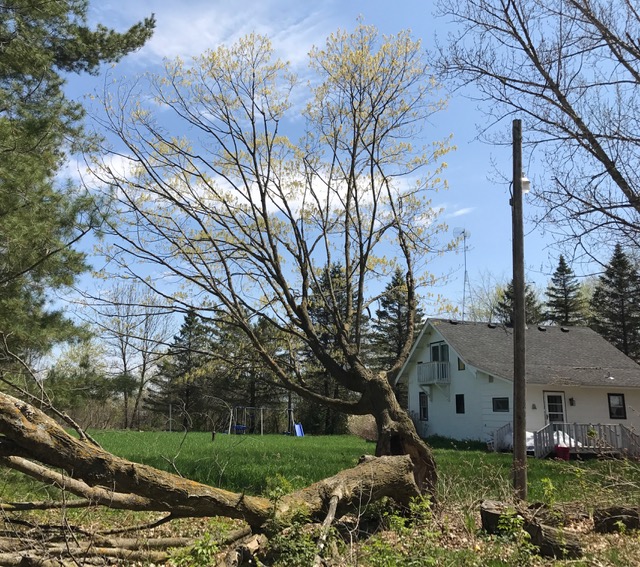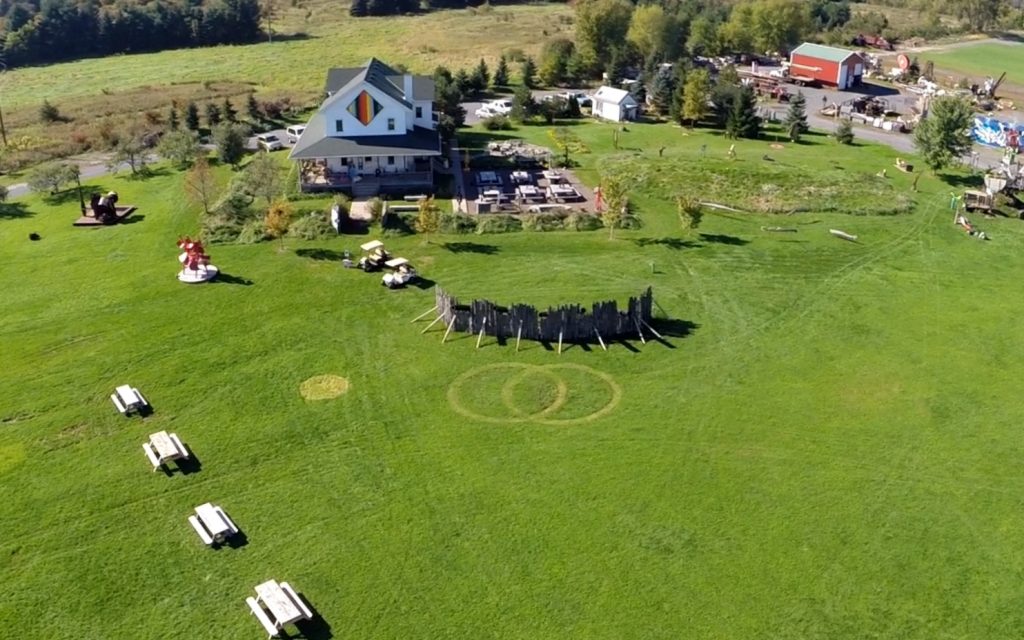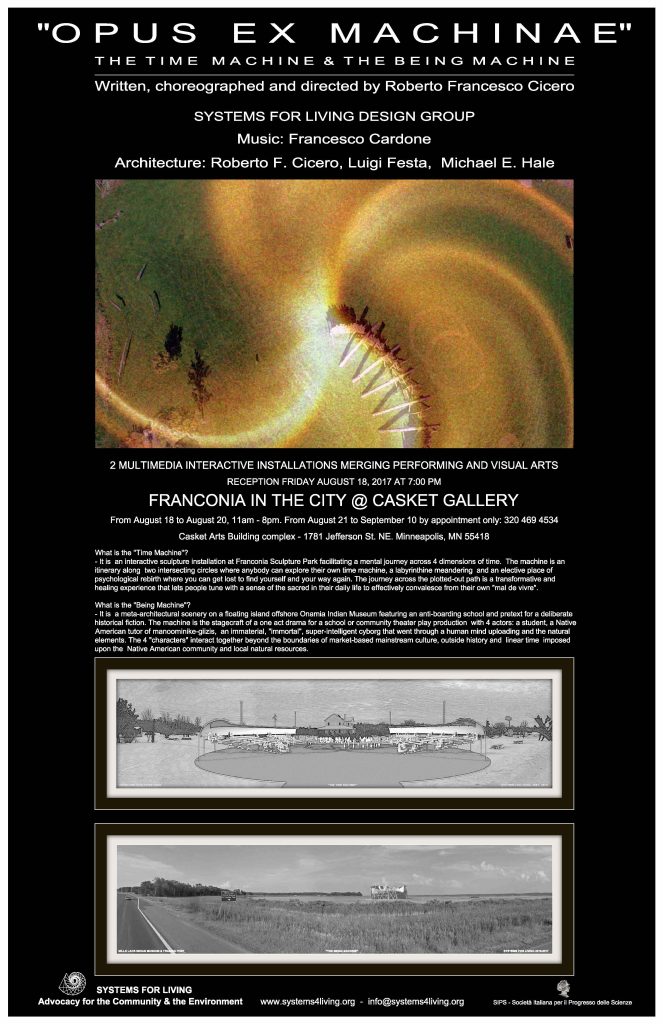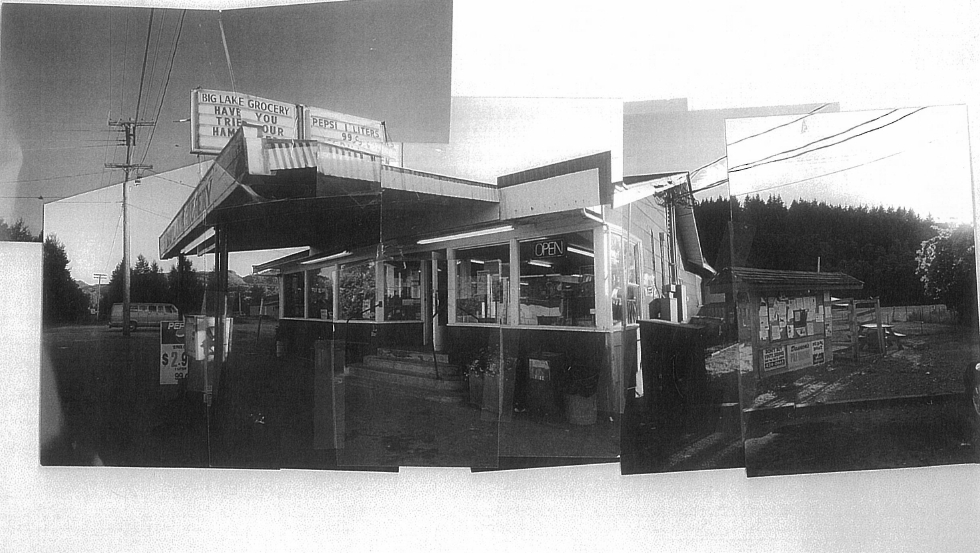
info@systems4living.org
Systems For Living is a not-for-profit organization active in the field of eco-design and promotion of environmental and social sustainability.
There are exuberant forces beyond architecture ability to act as an agent of positive transformation, and sustainability has become an increasingly trite commonplace. Buildings, which aren’t necessarily an end product of a genuine sustainable course of action, are claimed as sustainable only in terms of incorporating “green architecture” design principles which may not always lead to true sustainable results.
– Architecture alone cannot bring about positive social change.
– Architects with a transformation role, are located at one end of the production chain, where already exploited resources are dispersed.
– Architecture cannot be of service to the community and undermine a ruthless implementation of the built environment without it being ignited by un-specialized methodology and problem solving.
– There is no architecture or an agent of positive transformation that can be defined truly ecological without there being the possibility of being organically positioned into a sustainable social fabric.
SFL’s hybridization of the traditional architectural practice and its fixed accepted tools in the direction of a widened design process involving performing arts, is a sidestepping of the traditional thought about art and architecture function.
Merging architecture with other art forms means affirming that architecture is not all about buildings; it doesn’t mean designing and building objects, it is more than that. It is a view of the world in which the erection of a building is just one of the many expressions of that world view as a platforms to explore, envision, and nurture reforms and growth of cultural and social fabric in different contexts.
Today, we ought to reckon and choose a different relation of forces between a slow paced changing living organism we call natural environment and the built as a commonly accepted eternalization, or in other words, an arbitrarily kept fixed position, a motionless and unchangeable freezing state we call a building.
A fictitious separation between architecture specialized methodology and other forms of cultural experience involving the social body, as well as that between nature and humanity, is the mother of all forms of hedonistic sustainability. We live in a cultural and economic regime of hedonistic
sustainability as a result of an aestheticization of ecology, or in other words, the separate treatment of nature presupposing the subject/object dichotomy; a one-way relationship where the subject is Man, and the object of study and care Nature confined into a sphere of “thinghood”, into an arena of technical practice and separate reality. Hedonistic sustainability acts entirely within the “buildable” and is reduced to pure ornamentation, a superficial tattoo applied to the social body, solely relying upon ostentatious and rhetorical forms of
ecological houses, green buildings, and futuristic city districts.
We don’t support a romantic notion of nature as well as any idea that humans might survive if they overcome the alienations of modernity. The environmental plunder is not a fact associated with the culmination of the industrial revolution or with the exponential growth of technology, but it is principally the conduct and actions carried out by a part of humanity that has always adopted exploitation of natural resources as the basis of institutional domination of men over man and not as a form of survival. Most political forces tacitly support this surrender to progressive annihilation as a function of development. Defending an environmentalist principle means, first of all, carrying out a political action — regardless whether a certain future of extinction is recognized or not — to resist and oppose the option that renounces nature and implicitly to the whole of humanity.

This tree was once part of a living system composed of a network of 3 trunks interacting as a seamless whole. 2 trunks have fallen after a storm leaving the third one in the middle standing. It is an image manifesto, an aspect of ability in survival mode.
The formula is clear and simple, under our very eyes. Market place culture brings about conditions under which further advances of human economy in a competition mode will exponentially increase our chances of extinction. The next step in our evolution is to accept and embrace this ultimate truth. Our chances of survival depend on commons not on commodities, on a society based on community and cooperation, not on competition.
A different relation of forces: "The Time Machine" project at Franconia.

The Time Machine project is a multimedia and interactive artwork combining an array of art forms where living sculptures, land art and site specific architecture merge with dance, music, singing and acting.
The Labyrinth, the Maze, and the “Time Machine”.
The labyrinth and the maze are two dissimilar things to which correspond two different images.
The Maze is chaotic, with lots of twists and turns and dead ends, perhaps with more than one way out: but too few to find the right one. The labyrinth form and more precisely that of the unicursal labyrinth, is instead and ordered unity, without bifurcations and with a single way out.
Daedalus flees from the maze with his son Icarus on wings he has created from feathers and wax, knowing that there is no way out from its construction once one has been thrown in there. In the other hand, the possibility of reaching an hypothetical exit once one enters the maze can only be achieved through an external help: with Ariadne’s thread. This way is the way of Theseus.
So there’s a labyrinth-machine inside each maze, a clear and ordered unity embedded into a chaotic setting, and the image of the labyrinth is just that: a clear way out enclosed in Ariadne’s ball of thread. But the labyrinth, as we said, is a structured form of the maze, an Apollonian image that completely discards the Dionysian and chaotic nature of the maze in which Asterion, the minotaur, is confined , or in other words: man himself, a creature placed on the “cable stretched between the beast and the the overman” (Ubermensch) (Nietzche). The labyrinth is not yet a Time Machine.
The intent of a journey inside a Time Machine structured as the labyrinth inside Ariadne’s ball of thread, that finds its completeness and conclusion in reaching its core where our minotaur resides, and then in exiting from the labyrinth, cannot ignore the characterization of the link of existence and temporality constituted by an equally important element, that of transitioning 4 different temporal dimensions: Present, Past, Future and Back to Present. And this is our Time Machine.
The interactive machine embodies the archetypal image of the labyrinth and opens up to individual experiences as the place of rituals of passage, such as that from childhood to adulthood, but at the same time is a transformative and emancipatory experience for anyone who wants to explore, be it adult or child, their own “Time Machine”.
The multimedia work broadens this project function to the universal dimension by
re-embedding the sacred and auratic origin of theatrical representations. While
evoking the allegorical myth of Daedalus flight, the TM project is a genuine sustainable course of action for resisting a dystopian future and to push for
progressive social change and emancipation of the human condition.
 “O P U S E X M A C H I N A E”
“O P U S E X M A C H I N A E”
T H E T I M E M A C H I N E & T H E B E I N G M A C H I N E 2 MULTIMEDIA INTERACTIVE INSTALLATIONS MERGING PERFORMING AND VISUAL ARTS
Written, choreographed and directed by ROBERTO FRANCESCO CICERO
Music: FRANCESCO CARDONE Architecture and Stagecraft: ROBERTO F. CICERO, LUIGI FESTA, MICHAEL E. HALE
Exhibition held in 2017 @ FRANCONIA IN THE CITY CASKET GALLERY 1781 Jefferson St. NE Minneapolis, MN 55418
Ideas and methodologies in the direction of a widened design process beyond hedonistic sustainability. Advocating architecture ability to act as a real agent of positive transformation.
Facebook link: https://www.facebook.com/opusexmachinae/What is the “Time Machine”?
– It is an interactive sculpture installation at Franconia Sculpture Park facilitating a mental journey across 4 dimensions of time. The machine is an itinerary along two intersecting circles where anybody can explore their own time machine, a labyrinthine meandering and an elective place of psychological rebirth where you can get lost to find yourself and your way again. The journey across the plotted-out path is a transformative and healing experience that lets people tune with a sense of the sacred in their daily life to effectively convalesce from their own “mal de vivre”.
What is the “Being Machine”?
– It is a meta-architectural scenery on a floating island offshore Onamia Indian Museum featuring an anti-boarding school and a pretext for a deliberate historical fiction. The machine is the stagecraft of a one act drama for a school or community theater play production with 4 actors: a student, a Native American tutor of manoominike-giizis, an immaterial, “immortal”, superintelligent cyborg that went through a human mind uploading and the natural elements. The 4 “characters” interact together beyond the boundaries of market-based mainstream culture, outside history and linear time imposed upon the Native American community and local natural resources.
The lesson given by Adolf Loos’ proto-modern essay “Ornament and Crime” (1908) opens up the historical perspective necessary to identify an ontic stage of thinghood into vanished ultimate dwelling models and other modernist myths (e.g. “la machine a’ habiter”) neglecting the profound and essential questions of existence and temporality.
The hedonistic sustainability has an old originating essence: the illusion of a culture of difference in the sameness of waned prophecies, a creed and a proclaim which were once embodied by the modern condition. Today is what is granted to those appointed to transform the urban and territorial environment according to the paradigms of economic growth and development, often leading to spectacularism, gentrification, migration and decline of architecture to a mere role of servicing the marketing and
communication agenda of an hyper-consumerist culture.
No intervention that can be defined truly sustainable can refrain from nonviolent acts of sabotage of the nihilistic world view driven by an hedonistic sustainability; no successful attempts can be made at protecting renewable resources without mending the social fabric.



